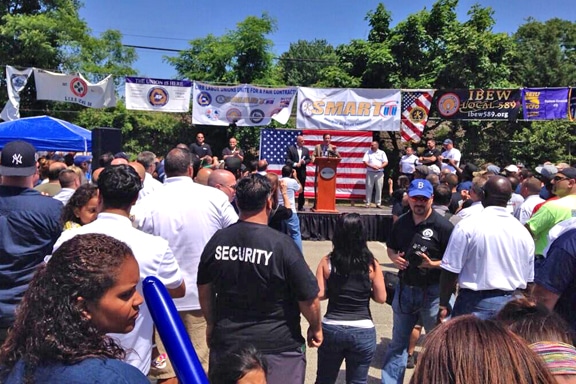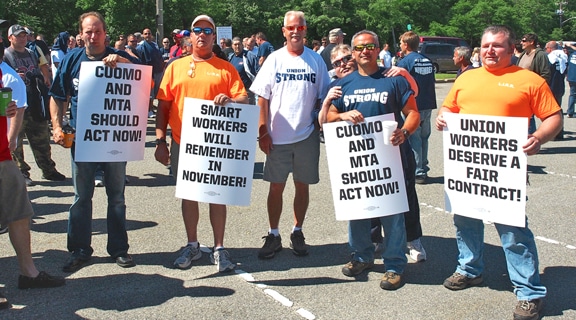 WASHINGTON – The U. S. Department of Transportation’s Federal Railroad Administration (FRA) June 27 issued a Record of Decision (ROD) for the 114-mile Fresno to Bakersfield Section of the California High-Speed Train System. The ROD is the last step in the National Environmental Policy Act process and clears the way to break ground on the project.
WASHINGTON – The U. S. Department of Transportation’s Federal Railroad Administration (FRA) June 27 issued a Record of Decision (ROD) for the 114-mile Fresno to Bakersfield Section of the California High-Speed Train System. The ROD is the last step in the National Environmental Policy Act process and clears the way to break ground on the project.
“This represents a major step forward, both for the State of California and for High Performance rail in the U.S.,” said U.S. Transportation Secretary Anthony Foxx. “It will create jobs, provide travelers with new options, and improve connectivity up and down the West Coast. This project is an important example of our commitment to investing in modernizing our rail infrastructure to meet growing market demand.”
The California High-Speed Train System will provide a reliable high-speed electric-powered train system that links the major metropolitan areas of California, delivering predictable and consistent travel times that are competitive with air and highway travel. It will also provide connectivity to commercial airports, mass transit systems, and the highway network; and help alleviate capacity constraints of the existing transportation system as increases in intercity travel demand in California occur, in a manner sensitive to and protective of California’s unique natural resources.
In its ROD, the FRA selects the preferred alternative outlined in its Final Environmental Impact Statement (FEIS), which was issued earlier this year. The preferred alternative is comprised of the alignment alternative adjacent to the BNSF Railway bypasses of Corcoran, the Allensworth area, and the Bakersfield Hybrid alternative. The preferred alternative includes a Downtown Fresno Station, a Kings/Tulare regional station, and a downtown Bakersfield station. FRA selected this combination of route alignments because they are more compatible with the long-range development planning goals of the region, and will result in fewer potential impacts on wetlands and special-status species habitat. The alignment will also reduce displacements and result in fewer impacts to religious facilities when compared to the other alignment alternatives.
FRA’s decision reflects the balancing of multiple considerations including environmental, technical, economic, operational, as well as community and stakeholder input. Between March 2007 and March 2014, more than 900 meetings in the Project area were held as part of the California High Speed Rail Authority (Authority) and FRA’s outreach efforts. The public summited more than 2200 written comment letters and verbal comments at public hearings in response to the 2011 Draft EIR/EIS and the 2012 Revised Draft EIR/Supplemental Draft EIS. The ROD also includes a Mitigation Monitoring and Enforcement Plan that describes measures the Authority must implement as part of the project to reduce, avoid, and minimize potential adverse environmental impacts.
“This ROD represents a major milestone in the planning process, which included a rigorous analysis that thoroughly incorporated public input to recommend these routes,” said FRA Administrator Joseph C. Szabo. “Public feedback is an essential component of the environmental review process and we relied upon it heavily while conducting this review.”
DOT’s historic investment in the California High Speed Train System through funding in the American Recovery and Reinvestment Act (ARRA) reflects the importance of investing in the modernization of our nation’s rail system.
The GROW AMERICA Act, or Generating Renewal, Opportunity, and Work with Accelerated Mobility, Efficiency, and Rebuilding of Infrastructure and Communities throughout America Act, will further advance this goal by providing for predictable, dedicated investments that enhance safety and modernize our rail infrastructure to meet growing market demand, while promoting innovation and ensuring transparency and accountability. The Act will invest $19 billion over four years to improve rail safety and invest in a National High-Performance Rail System, as states and local communities need the certainty of sustained funding to make the transportation investments necessary to improve our infrastructure and support our economic growth.
A copy of the ROD can be found here.






